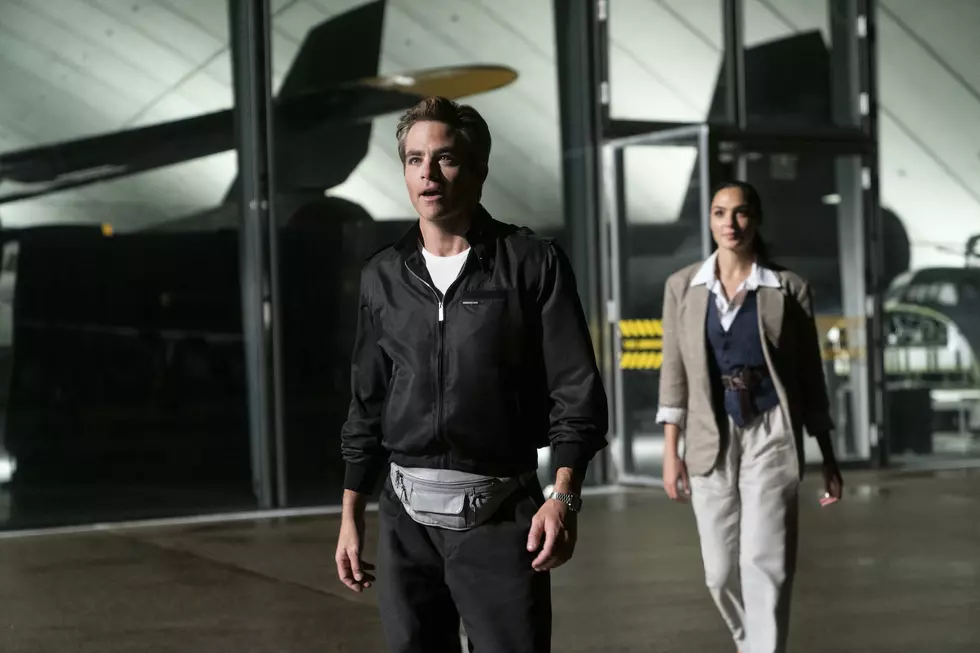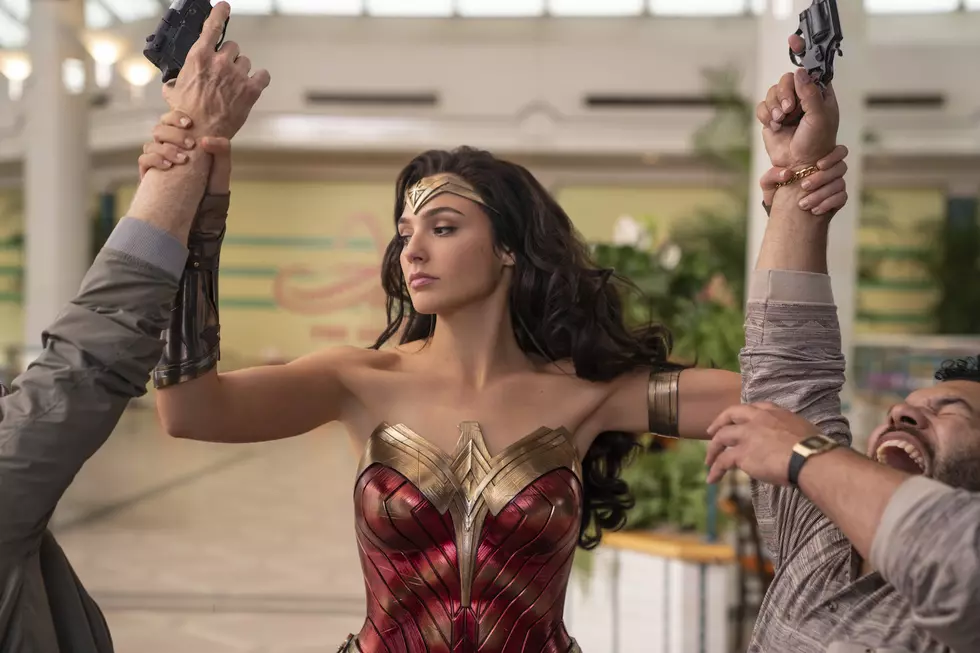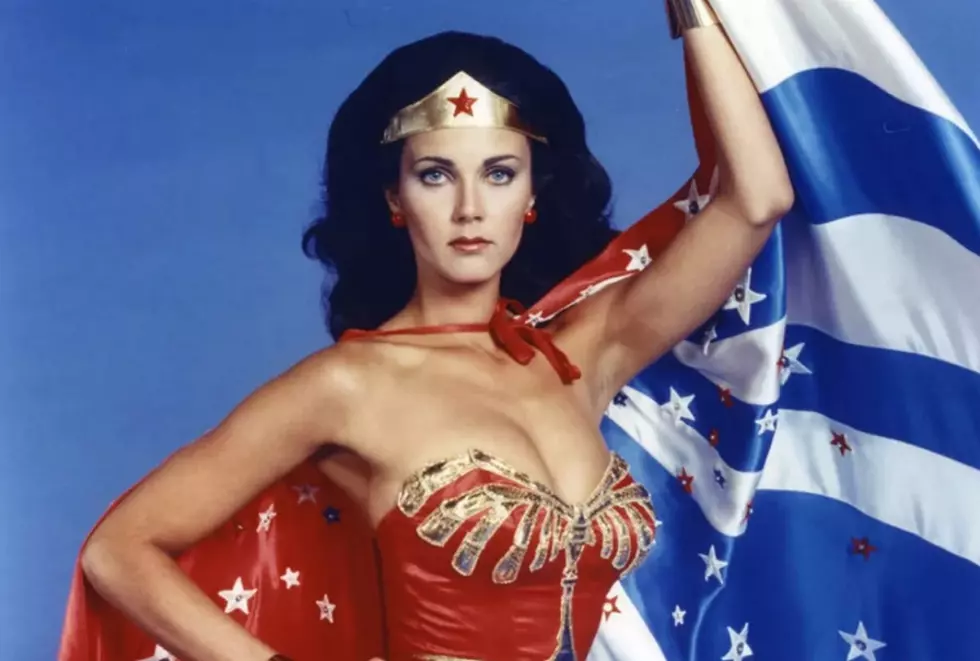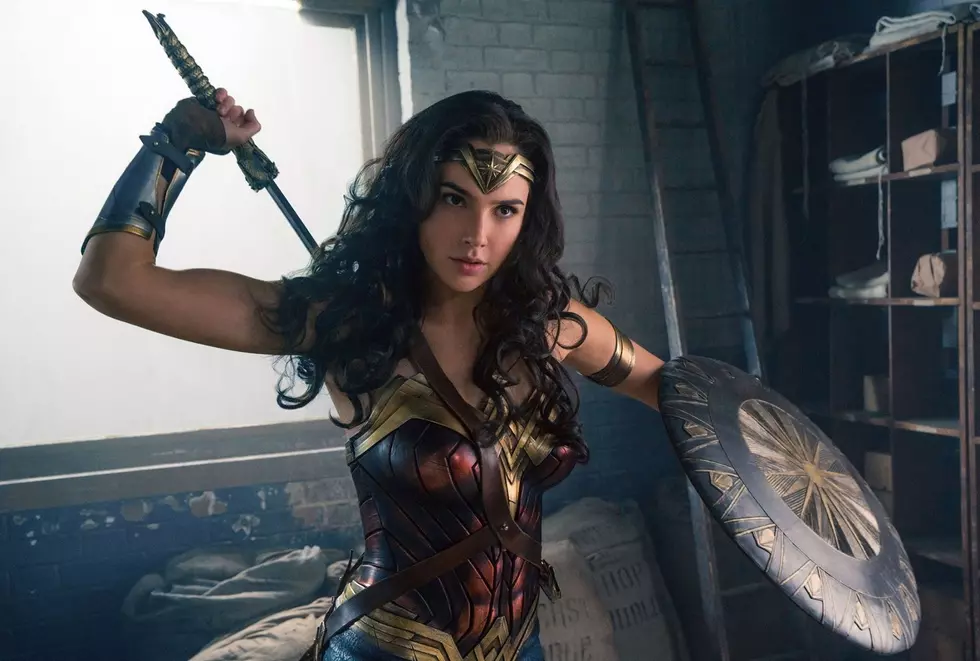![You Are Now Leaving Paradise Island: Brian Azzarello & Cliff Chiang Discuss Their Epic ‘Wonder Woman’ Work [Interview]](http://townsquare.media/site/622/files/2014/11/WWheader-630x420.jpg?w=980&q=75)
You Are Now Leaving Paradise Island: Brian Azzarello & Cliff Chiang Discuss Their Epic ‘Wonder Woman’ Work [Interview]
Last month DC Comics released Wonder Woman #35, the culmination of Brian Azzarello and Cliff Chiang's three-year run on the series. The writer-artist team relaunched Wonder Woman in September 2011 as part of DC's line-wide "New 52" reboot, and proceeded to build it into one of the company's most acclaimed titles.
Over the course of 36 issues (#1-35, and a special "Zero Issue"), Chiang, Azzarello, colorist Matt Wilson, letterer Jared K. Fletcher, editors Matt Idelson and Chris Conroy (and a number of guest artists) constructed an elaborate and controversial new status quo for the Amazonian princess: they gave Diana a new origin, reestablishing her as the daughter of Queen Hippolyta and Zeus, rather than a woman formed of clay; they rewrote the history of Themyscira and its Amazonian inhabitants to one of violence and drama, rather than the idyllic Paradise Island; they set up an extended supporting cast (including the human Zola, her son Zeke, Orion of the New Gods, and an entire pantheon of deities and monsters); and in issue #23, they killed off Ares and crowned Diana herself as the DC Universe's new God Of War.
Azzarello and Chiang's Wonder Woman has been praised for putting forth an epic, cohesive and narratively self-contained superhero drama with flourishes of the urban fantasy that once defined DC's Vertigo imprint, but has also been criticized for the changes it made to Wonder Woman's core myth. What's not in dispute is that the pair have created the most memorable and talked about Wonder Woman story in years -- maybe in decades -- and to mark the conclusion of their work, we caught up with Chiang and Azzarello to look back at their run and talk about their novel take on the feminist icon.
ComicsAlliance: Your run on Wonder Woman managed to stay largely self-contained for three years, telling your own story without any real crossovers. Was it difficult to have that level of autonomy when dealing with a character that's such a vital part of the larger DCU, or were you able to just tell the story you wanted without too much worrying?
Brian Azzarello: Well, we don't play very well with others! [laughs] Before we got started, we talked to [DC Co-Publisher] Dan [DiDio] and editorial at DC and submitted an outline, and said "this is gonna take three years," and they said "great, go for it!" We had autonomy because we submitted the idea before we even started.
CA: While this is generally known as "the Azzarello/Chiang run," there were a number of other people who had a hand in the finished product: Tony Akins and Goran Sudzuka drew some issues, Matt Wilson handled the colors, Jared Fletcher was your letterer. Did you choose the rest of your team, were they brought on by editorial, or was it a mix of the two?
Cliff Chiang: Once we knew the book was going to happen, we were just looking to get the people we wanted to work with, that we knew would share the vision of the story we were telling. Brian has known Tony for a long time and he was a great fit, and then we brought in Matt on colors and Jared on letters, and then later on Goran came in – everybody was friends, and everybody knew each other's work and it all jelled.
CA: Cliff, you did all the covers for the series, so your presence was felt even on the issues you didn't draw. Did you see any interiors before doing those covers, or were you drawing them at the same time the scripts were being written?
CC: The covers had to be done early, so they could be used in solicitations – usually it's a month or two before the issues are actually being worked on. So we'd have an outline of what we were doing, and do the covers based on that.
CA: It's also somewhat refreshing that this is a book that had a unified look, with the same artist handling both covers and interiors for most of the issues…
CC: Well, the covers were an opportunity to sell the feel of the book. I mean, the interiors are the story, and the covers are advertisements for the comic – they're an extra opportunity to try and present our vision of the character, and get someone to stop, take a look inside, and see Wonder Woman in a different light.
CA: Did you also do all the character designs, or did Tony and Goran have a hand in that as well?
CC: I did most of them, but when Tony was drawing an issue, for example, we'd have Tony design whatever gods showed up in that issue. He did some of the more fantastic designs, and actually, I think a lot of the ones people really dig are his: Poseidon as a giant whale creature, and Hades. Those two in particular are Tony's, and they're really, really striking – they sort of come out of left field, especially when you look at them compared to the rest of the gods, they really look otherworldly.
CA: On that note, there have been some criticisms that this new incarnation of Wonder Woman disposed with a lot of the established mythology – but you've also introduced a whole host of new mythological elements over the course of the series. Did you do much in the way of research beforehand, through Wonder Woman's history and/or Greco-Roman legends, or were you just able to combine and remix these things from memory?
BA: I did some research. Not too much, as I didn't want to be too tied to Greek mythology or what had gone before – I wanted to update it a little bit, and modernize it. And as far as the criticism goes, I think that was maybe just five or six noisy complainers – it's the nature of the Internet, I think.
CA: Well the differences weren't just in the story – it was clear from the first images we saw that this was not a Diana we'd seen before. The costume design, the way she moves on the page, her bearing and attitude. Were there any particular inspirations, or any real-world figures you looked to when figuring out what you wanted "your Wonder Woman" to look like?
CC: Not really, it was more a general feel. For me, once Brian's script came in and I saw what her voice was, then you immediately get an image of how she'll carry herself. She's very confident, and while she's not necessarily flamboyant, she's very striking. She's an Amazon warrior, and when she walks in a room, all eyes go to her. She handles herself like royalty, she's very confident, and very powerful. And someone like that tends to be quieter than you'd expect.
CA: Brian, you mentioned in an earlier interview that once you got going on this title, Cliff began taking a hand in determining the pacing and the action. Did your working relationship continue evolving over the run?
BA: Oh yeah, definitely. It's probably the closest collaboration that I've had, ever. It was great, bouncing lots of ideas back and forth – a really great working experience.
CA: And you went in knowing the beginning and end, with a firm plan of where you were going, but how much did the story grow and change in the telling?
BA: It changed somewhat, but we had the outline, and certain beats happened where they had to happen. We knew Orion would be showing up at the end of year one; that the end of year two, that's it for War, and she would become the God Of War, and so, for all that, we stuck to our original plan.
CA: Did you have the final page planned from day one, that closing scene on the mountaintop? Or was that something that you came up with right at the end?
BA: We knew where things would be, but as far as that final image, no, that happened as we were working on the last issue. In fact, that was an extra page we asked for!
CA: Looking at the run as a whole, the first few issues, though there were some recognizable settings, seemed to be based very much in fantasy. You established the pantheon, introduced the gods and mythological figures, and set up the archetypes – but over time, we got taken to all kinds of real-world settings, and while Diana is the catalyst and focal point, Zola served as the contrasting human element, her presence making Diana more relatable. Was that all planned, or is that just overthinking?
BA: Oh, overthink all you want! It sounds much better – what you said. [laughs] It was always there. We knew we were creating these gods and we needed something human in the middle of all of it.
CC: Especially with Wonder Woman realizing she's a child of the gods as well, we needed someone to connect her back to the real world. Someone human for her to fight for.
CA: Were there particular goals you had for Zola, or reasoning behind making this specific character the second lead?
BA: We wanted to create a character in Zola that was really modern, really a child of our time.
CC: She's meant to be very contemporary, and because of that, she's a good foil for Diana.
CA: As for Diana herself, over the last act of this story it became clear that yes, she's the God Of War, but she's motivated by love and mercy. She embodies that alpha and omega, that contrast. And after Orion and the rest have departed, she's the one still there, fighting for her friends…
BA: And that was always the intent. When we came up with the idea that she would become the God Of War – well, it was actually asking the question "what if this character became the god of war, what would that be like?" And the conflict there built a lot of the story for us.
When we took this on, Cliff and I talked over if there was anything new we could do to this character that hadn't been done before. "Do we have something to say?" basically. And we wouldn't have done it if we didn't have something to say about the character, and somewhere to take her. I think for too long, people have treated this character really preciously, and that leads to stagnation.
Like, why is Batman so relevant? It's because he gets reinvented, constantly. There are a lot of stories you can tell with that character. And there are a lot of stories you can tell with this character too – that was our approach.
CA: So now that you've set this new status quo for Wonder Woman, how do you feel about your run, and about the impact you've had on the character?
CC: I don't feel I can speak to any impact, but I feel like we did a good, honest job. I'm really proud of the work that we did, and it's been nice with the last issue to finally sit back and see people's reaction. It's been really gratifying to know that we accomplished what we set out to do.
More From ComicsAlliance








![Ryan Browne And Pete Woods On Their Superhero Satire ‘Project Superpowers: Hero Killers’ [Interview]](http://townsquare.media/site/622/files/2017/03/Hero-Killers-Featured.png?w=980&q=75)
